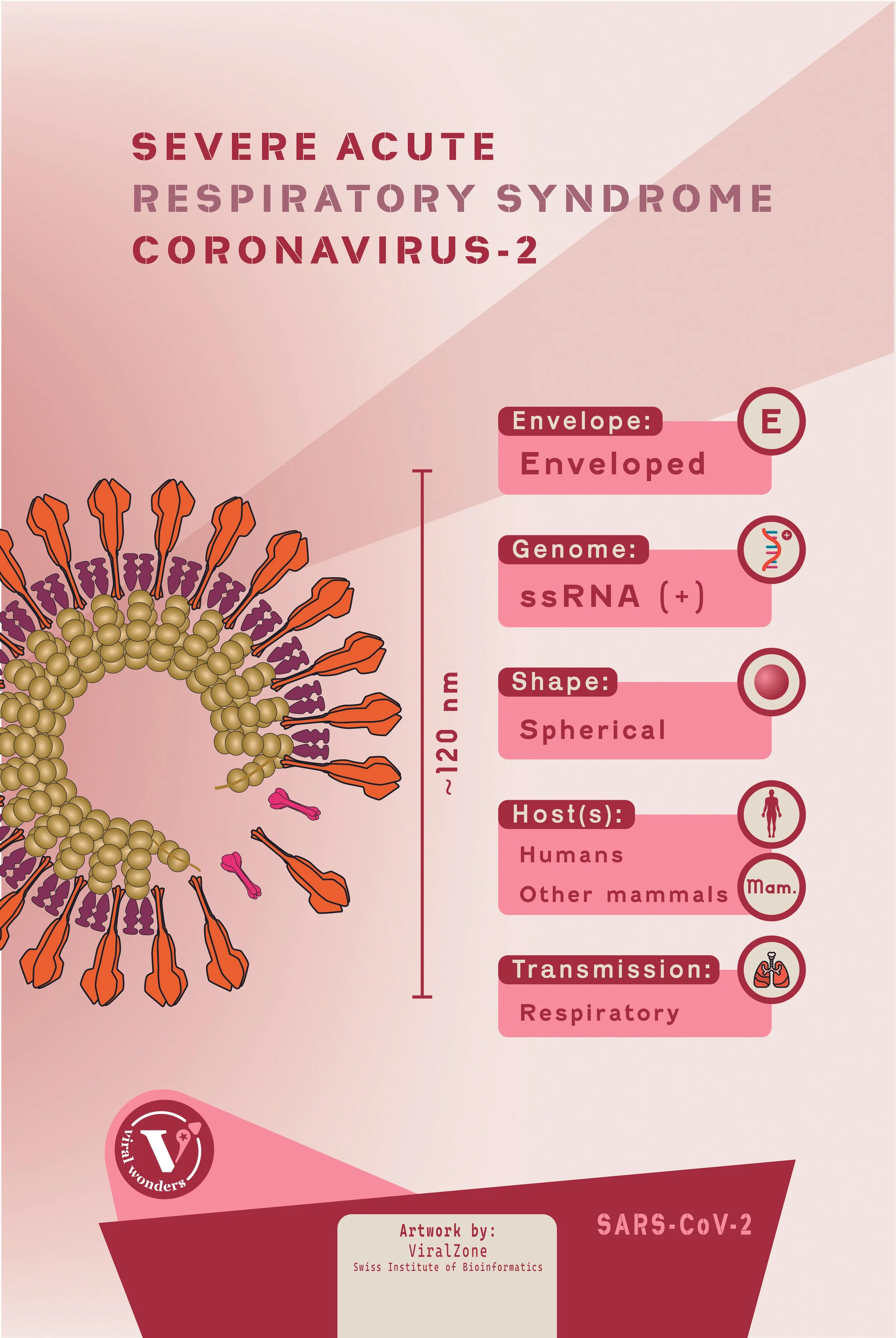
Visualising Viruses
Seeing the Unseen
Viruses are invisibly small, but they influence every aspect of our lives.
The resources in this website have been developed by scientists and artists to help you visualise the microscopic viruses which shape the world you see around you.
Microbes such as bacteria and viruses are too small for us to see directly. Viruses are particularly small – so small that even the most powerful light microscopes can't examine them in detail. But this doesn’t mean we can’t learn about them! Scientists have developed many methods for studying viruses. Electron microscopes and X-ray crystallography can reveal details of viruses that light microscopes can’t spot. Other methods can give us a partial picture of viruses – what they’re made of, or what shape their proteins are – which we can combine to make detailed models of what a virus would look like, if it was big enough to see.
The resources on this website, developed by the MRC-University of Glasgow Centre for Virus Research (CVR) with The Glasgow School of Art (GSA) will let you picture the invisibly small viruses which surround you. You’ll learn about how we combat the viruses that make us sick, and you will also see the beauty of this microscopic world, a world that is hidden right in front of you.
Explore the resources below to discover the fascinating world of viruses!
Explore Our Resources
-

Visible Viruses- Augmented Reality App
Bring viruses to life on your phone or tablet with our augmented reality app.
-

Meet the Viruses
Step inside a 3D virus gallery. Explore on web apps or through virtual reality headsets.
-

SARS-CoV-2 Mutation Explorer
This interactive web app allows users to explore how SARS-CoV-2 evolves over time.
-

Viral Wonders Card Game
This virus-themed card game is perfect for challenging your friends! Can you guess the virus?
Educational Resources Pack
Perfect for classrooms and self-directed learning!
Our educational resources pack is designed to support the use of resources when teaching students aged 11-18. The materials include:
• Background information about viruses and viral diseases
• Detailed profiles of six viruses which cause major human diseases
• Activities to consolidate knowledge and engage learners
Credits: Developed by Amy Shergold, with supervision from Lois Mason and Ed Hutchinson (CVR). Lesson plans developed by Ruth Abramson with support from Sam Langford.
How to Use These Resources
-
These resources, which have been designed to complement biology syllabuses used in schools in the UK, can be used to enhance lessons on viruses, disease, and public health. The apps offer a variety of unique ways to visualise aspects of microbiology that students often find challenging. A combination of AR, VR, web-based and print resources are available to suit different classroom settings. The educational pack includes suggested classroom activities and additional information for teachers.
-
Explore at your own pace! Start with the Educational Resources Pack for an overview, then dive deeper with our interactive apps and games.
-
These resources can support outreach activities, science fairs, and informal learning environments.
All educational materials are freely available under a creative commons license (CC-BY-NC-ND 4.0).
Have questions or feedback? Contact us at lois.mason@glasgow.ac.uk or reach out on social media – X | Bluesky | LinkedIn


